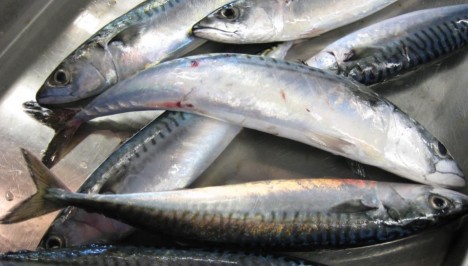
Atlantic mackerel, courtesy National Oceanic and Atmospheric Administration
If you’re looking to increase your consumption of omega–3 fatty acids, you’ll need to eat eight ounces of fish and seafood per week. But not just any fish and seafood. And you don’t have to limit yourself to salmon.
Eight ounces of fish and seafood per week (for example, two four-ounce servings) is enough to provide an average of about 250 milligrams (mg) of heart-healthy EPA plus DHA (the major omega–3 fatty acids from seafood). This amount of fish with omega 3s is enough to reduce heart attacks and deaths from heart disease. That’s aiming for one serving a week from choices high in omega 3s.
One fish high in omega 3s is salmon (fresh, frozen, or canned). However, world supply of wild salmon is not enough to support major increases in consumption. Other choices that are eco-friendly and high in omega–3 fatty acids include Atlantic mackerel; sablefish (also called “black cod”); Arctic char; sardines; herring; mussels; oysters; most barramundi, lake or rainbow trout; and U.S. or Canadian white (albacore) tuna. More information about making choices that support both health and the environment is provided by the Monterey Bay Aquarium (http://www.seafoodwatch.org) and Seafood Health Facts, an initiative developed jointly by several major universities.
Low-fat choices like cod, haddock and catfish are excellent sources of protein, selenium and other nutrients, but if you eat only seafood choices like these, you are unlikely to reach the recommended target of EPA plus DHA fat.
If your physician advises that you should be consuming higher amounts – 500 mg or more – of omega 3s, then focus choices on the high omega–3 fish, increase amount of fish, or discuss adding supplemental EPA + DHA.
Courtesy of the American Institute for Cancer Research

By Karen Collins, MS, RDN, CDN, FAND. Karen Collins is a nutrition writer, speaker, and consultant. She has also worked as an expert nutritional research reviewer, reading and evaluating the scientific soundness of hundreds of research studies. In recognition of her accomplishments Karen was recently named a Fellow of the Academy of Nutrition and Dietetics.
Fish with Omega 3s, and Fish without Them is a post from:
SOURCE: – Read entire story here.




